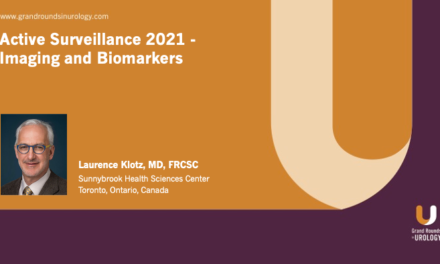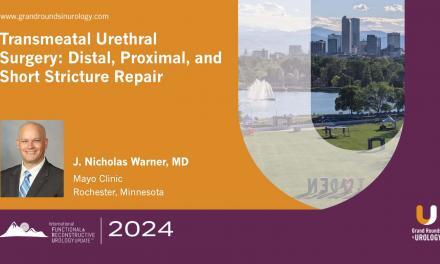Mohummad Minhaj Siddiqui, MD, presented “Urologic Perspective on the Current and Emerging Role of Multi-Modality Imaging and Radiogenomics” during the virtual 5th Global Summit on Precision Diagnosis and Treatment of Prostate Cancer in September 2021.
How to cite: Siddiqui, Mohummad Minhaj. “Urologic Perspective on the Current and Emerging Role of Multi-Modality Imaging and Radiogenomics.” September 2021. Accessed Jul 2025. https://grandroundsinurology.com/urologic-perspective-on-the-current-and-emerging-role-of-multi-modality-imaging-and-radiogenomics/
Urologic Perspective on the Current and Emerging Role of Multi-Modality Imaging and Radiogenomics
Mohummad Minhaj Siddiqui, MD, Associate Professor of Surgery at the University of Maryland School of Medicine and Chief of Urology at the Baltimore VA Medical Center in Redwood, Maryland, discusses the role of precision imaging and genomics in managing localized prostate cancer. He first considers how treatment strategies will vary based on cancer aggressiveness, ranging from active surveillance in low-risk cancer to multimodal treatment in advanced and metastatic cancer. Dr. Siddiqui cites the PROMIS study which stratified risk of significant cancer based on MRI suspicion score of lesions. He points out that even at that high end of the scale, MRI identified cancers in some patients that either had insignificant or no cancer, demonstrating that imaging cannot replace biopsy. Equally important, at the low end of the scale, half of patients have cancer not shown in the scan. Dr. Siddiqui adds that while a scan may not suggest high-risk cancer, this is not the same as not having cancer. He then discusses the growth of genomic profiling in understanding genomic characteristics of prostate cancer. Genomic profiling is available for different stages of prostate cancer workup from susceptibility characterization to disease risk stratification and prediction of treatment response. The GC score in genomic characterization has similar limitations as imaging, leading to the question of whether these two modalities are capturing the same underlying issue or complementing each other. Dr. Siddiqui then describes how he uses imaging in a surgical setting for margin size and extracapsular extension at radical prostatectomy. He concludes that while it is not perfect, advanced imaging can improve risk stratification and assist with cancer staging and treatment planning. Similarly, genomics can also improve risk stratification and can reduce interventions like adjuvant radiation.
The Virtual Global Summit on Precision Diagnosis and Treatment of Prostate Cancer brings together key international opinion leaders of every clinical subspecialty involved in patient care. This event is an integral part of the AdMeTech Foundation’s Annual Summit, which was established in 2016 and became seminal in shaping the state of the art and future vision for precision care. The goal of this event is three-fold: 1) Educating the key stakeholders; 2) Supporting a sustained cross-disciplinary dialogue and consensus on the best emerging clinical practices and research priorities; and 3) Expediting clinical adoption of promising novel diagnostics and therapeutics. For more educational activities from this virtual event, visit our collection page.
ABOUT THE AUTHOR
Mohummad Minhaj Siddiqui completed training at MIT, Harvard, and the NIH in the field of Urology and subspecialty of Urologic Oncology. He is Director of Urologic Oncology at the Greenebaum Comprehensive Cancer Center at University of Maryland Medical System. His research interests are in the areas of cancer metabolism and how better understanding of metabolic derangements in cancer can lead to improved diagnosis and treatment. Clinically, he is particularly interested in understanding improved integration and utilization of MRI for the diagnosis and management of prostate cancer.




